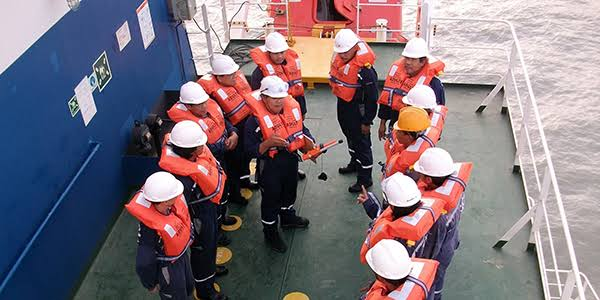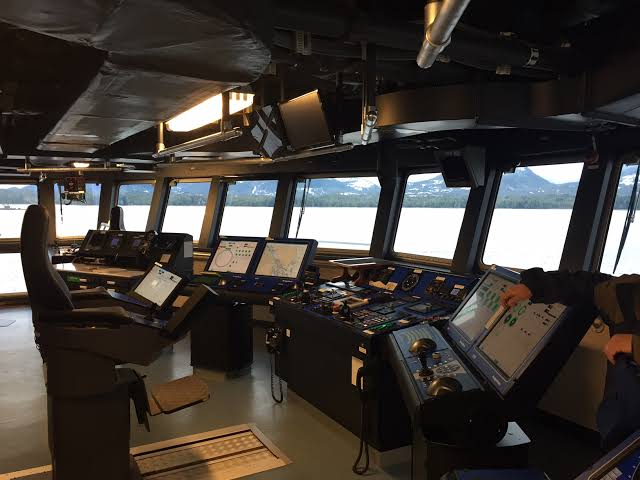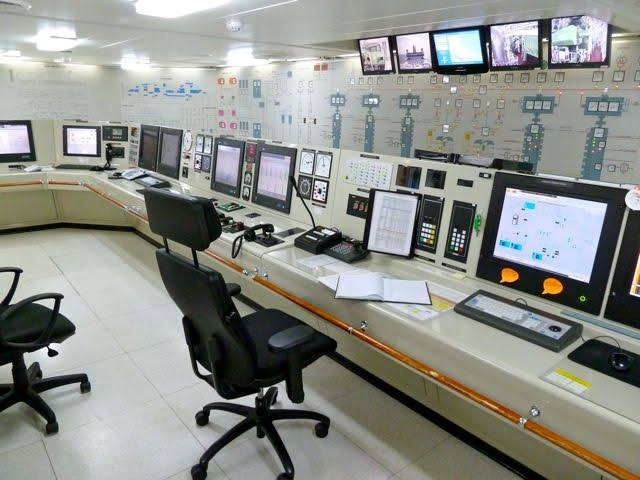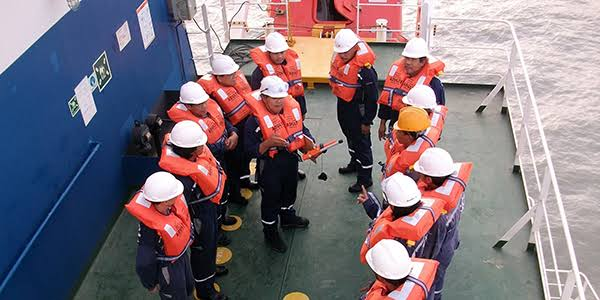ONBOARD SHIP MANAGEMENT

Concerning shipboard management the company is desired in compliance to the ISM code as well as the ISO 9001 standard to have formed a set of company objectives & policies. Precisely the ISM code approach need the company to have formed a safety & environmental protection policy which defines ISM Code objectives to be achieved, accomplished & maintained.
Such objectives should aim to the direction of ensuring safety at sea as well as the prevention of human injury or loss of life or damage to property. Another important objective of the policy should focus on the environmental conservation & in general on the safeguarding of the marine environment not excluding of course other related environmental issues such as air-pollution control, recycling etc.
In order to achieve such objectives the company should provide Safe Working Practices guidelines and procedures (e.g. enclosed space entry, hot work etc) respective to the ship working as well as equipment which results on keeping a Safe Working Environment onboard. The procedures and the guidelines to be implemented/followed should have been developed in a way that they can also represent safeguards against possible risks which the company has identified. The company should also have in place procedures regarding response in case of safety or environmental emergencies and of course the Safety Management System should be consistently enhanced.
All the above should always be in accordance with obligatory rules, regulations; applicable codes, guidelines & standards suggested by the IMO, Flag Administrations, Port State Authorities, Classification Societies & maritime industry organizations. On the other hand the ISO 9001 standard need the company to have formed a quality policy along with objectives that should be implemented onboard.
Such a quality plan should comprise a commitment to comply with any conditions (e.g. customer requirements, regulatory requirements etc) and to continually improve the effectiveness of the quality management system which means that a management analysis methods should be established in order to assess and evaluate the implementation of the management system (a requirement which is also stated in a similar way in the ISM code);. The policy should also be communicated and understood within the organization, and is reviewed for continuing suitability. Moreover, the company should also be committed in maintaining the integrity of the quality management system whenever changes to the quality management system are planned & carried out.
Quality objectives should be established within relevant procedures of the company and they should be measurable & consistent with the quality policy. Such objectives may be:
1. High quality services measured by internal and external audits & non-conformances,
2. Customer satisfaction which can be measured through customer surveys and complaint handling procedures,
3. Crew training improvement measured through crew training evaluations,
4. Non Conformities reduction measured through internal/external audits and monitoring procedures
Both the ISM & ISO 9001 require that any obligatory conditions, laws & regulations are to be followed & executed accordingly. The ISM code states that the company‘s formed safety management system should assure that in accordance with obligatory rules & regulations is achieved throughout shipboard operations and that any other applicable codes or guidelines etc that are being suggested by the Flag Administrations, the Classification Societies, the IMO etc are considered.
Both the ISM code & ISO 9001 need defined levels of authority, responsibility & lines of communication.
Compliance to the ISM code duties, jurisdiction as well as their communication between personnel onboard & ashore, whose work is linked & also influence safety & pollution prevention, should be clearly described & recorded. E.g., the Master normally has the power & is accountable for the execution of the drills program with the help of the Chief Officer. The Cook is responsible to keep the galley and the stores in a clean condition and is under the supervision of the Master and the Chief Officer. The ISM code also need a clear statement highlighting the Master‘s overriding power & the accountability to make decisions with respect to safety & pollution prevention. The ISO 9001 standard requirements are similar although they are quality oriented and related to customer satisfaction.
The ISM code & the ISO 9001 need a person ashore to be designated with particular duties & responsibilities related to the application of their requirements. Thus, the ISM code requires a Designated Person Ashore (DPA) who ensures and monitors the safe operation of company ships allowing links between the company & the crew onboard. The DPA is necessitated to have direct approach to the highest level of management. On the other hand the ISO 9001 standard need the place of the Quality Management officials who is to be designated with the duty & power to assure that the quality management system processes are accepted, executed and maintained. He is also accountable to inform the top management concerning the performance of the quality management system & he is able to make the company know about the customer‘s needs.
Concerning the human resources the ISM code express that the company should assure that each ship is manned with seafarers who have the appropriate qualifications, certifications according to national and international requirements. Additionally, the ISM code need that the seafarers are also medically fit for the job. Another conditions of the ISM code is that all crew or personnel with duties related to safety and environment protection should be appropriately familiarized in order to ensure that the duties will be conducted on a safe and environmental friendly way. Such familiarization is usually conducted according to company developed forms as well as any training products that may be needed in compliance to the company policies. Useless to say that for all the above records are to be kept.
ISO‘s 9001 conditions are same although they are more widely applicable requiring also an analysis on the effectiveness of actions taken & making personnel aware on how to provide quality objectives.
One requirement that is not included in the ISO 9001 but is present within the ISM code is Emergency Preparedness. ISM requires that potential shipboard emergency situations should be identified and described in order to ensure that they are confronted and efficiently responded. This conditions may take the form of checklists, drills procedures, posters etc which should distinct & simple recommendations on what to do in case of an emergency. The closest conditions of ISO 9001 to emergency preparedness is the requirement for the control of non-conforming products.
BRIDGE OPERATIONS MANAGEMENT

In order to manoeuvre safely an effective command, communications, methods & controls needs to be accepted. Passage planning is performed to analyse the safest & most economical sea route between ports, as well as to find & identify any possible danger so as to avoid them. Equipment can fail & unexpected situations may arise, so there is a requirement for the contingency planning in order to be ready to face the unexpected. Watch officers at the sea required to be able to maintain a proper look-out & to observe charts & the radar. Bridge notes should be given in order to define how to handle particular equipment & how to perform maintenance procedures where required.
All of the above are just a small fraction of the operations being performed onboard a ship‘s bridge & they emphasize the need to have well developed plans for shipboard operations in compliance to the conditions of the ISM code. Planning of the work is also a conditions of the ISO 9001 standard. Every shipping company should prepare practical guidance regarding safe navigation & its policies should include:
1. a clear statement that safety of life & safety of the ship are the most imminent operational factor
2. allocation of bridge duties and responsibilities
3. voyage planning procedures
4. chart and nautical publication correction procedures
5. essential navigation equipment is available & fully operational
6. contingency response plans
7. accident and near miss reporting procedures;
8. recording of voyage events;
9. familiarization training and handover procedures; 10. company contacts, containing the designated person under the ISM Code.
ENGINE ROOM OPERATIONS MANAGEMENT

A well maintained ship requires, apart from a well planned & with defined procedures bridge, an effective supervision in the engine room. The ISM code as well as ISO 9001 standard need particular planning for the ship‘s working & same as in the case of bridge operations, planning is also required for engine room operations and therefore procedures for identifying & controlling the performance of main & auxiliary machinery, steering gear, bunkering, waste management etc. as well as orders & guidance notes, are required in order to ensure safe operation of all involved equipment as well as the safety of the crew. Therefore it is essential to have a well recorded system on the Engine department organization, defining duties & responsibilities, Maintenance procedures stating best practices, reporting methods and safety instructions etc.




